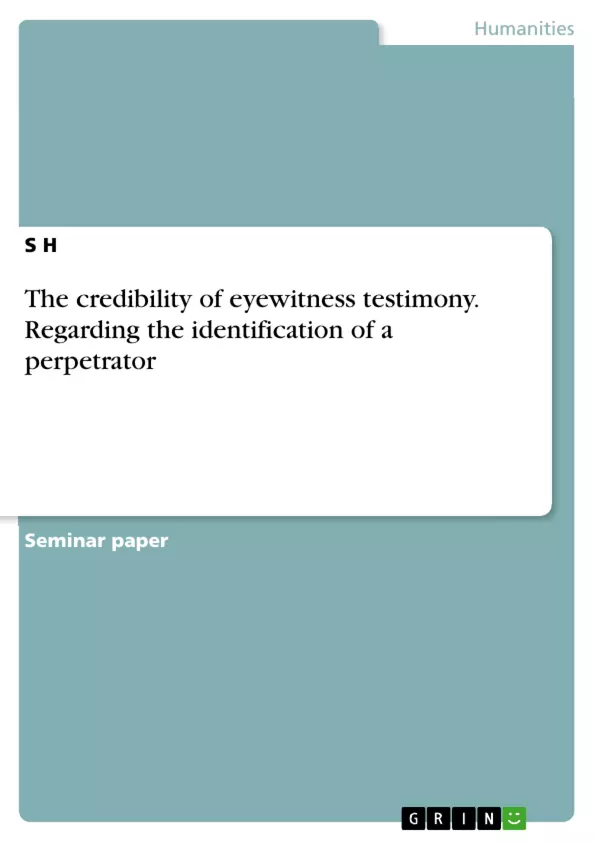This paper is about the role of credibility of eyewitness testimony when it comes to investigations.
Eyewitness testimonies are of great importance for investigations and often are the main reason for suspects getting accused. Wrong statements by eyewitnesses can have fatal consequences for an innocent person. A conviction of an innocent person is an unbelievable incision in life. Even if the misidentified target does not get convicted, a charge can evoke emotional problems as well as bad reputation. These facts show the great importance of the reliability of eyewitnesses in our society. But according to Rademacher the credibility of eyewitness testimony is overestimated although it is of such a great importance.
The foundation of this elaboration is the hypothesis that says that eyewitnesses often make mistakes when it comes to a culprit's identification. Initially, background information regarding the perception and identification of a person are constituted. Afterwards, the experiment Matching faces to photographs with its implementation and results is examined to prove the thesis. Also, possible reasons for people´s misidentifications are given from which partly result suggestions for improvements for real-life situations.
Inhaltsverzeichnis (Table of Contents)
- Introduction
- Background information
- Study
- Results
- Reasons for misidentifications
- Conclusion
Zielsetzung und Themenschwerpunkte (Objectives and Key Themes)
This elaboration examines the credibility of eyewitness testimony, specifically focusing on the accuracy of face identification. The study aims to demonstrate the potential for errors in eyewitness identification, particularly when matching faces to photographs. The research also explores the reasons behind these misidentifications.
- Reliability of Eyewitness Testimony
- Face Recognition Processes
- Factors Affecting Identification Accuracy
- Misidentification in Real-Life Situations
- Implications for Criminal Investigations
Zusammenfassung der Kapitel (Chapter Summaries)
- Introduction: This chapter introduces the topic of eyewitness testimony and its significance in investigations. It highlights the potential consequences of misidentification, emphasizing the importance of evaluating the reliability of eyewitness accounts.
- Background information: This chapter delves into the cognitive processes involved in face recognition, explaining the evolutionary purpose and limitations of this ability. It discusses how factors like familiarity and distinctiveness influence memory and recognition.
- Study: This chapter describes the research study "Matching Faces to Photographs," which examined the accuracy of eyewitness identification in a controlled setting. It outlines the methodology, including participant characteristics, stimuli used, and the experimental design.
- Results: This chapter presents the findings of the "Matching Faces to Photographs" study, analyzing the accuracy rates of participants in identifying a target face from a range of photographs. It explores differences in identification accuracy based on the presence or absence of the target in the photograph set.
Schlüsselwörter (Keywords)
This work focuses on the credibility of eyewitness testimony, particularly in the context of face identification. Key concepts include face recognition, memory processes, identification accuracy, misidentification, and the implications for criminal investigations.
- Citar trabajo
- S H (Autor), 2014, The credibility of eyewitness testimony. Regarding the identification of a perpetrator, Múnich, GRIN Verlag, https://www.grin.com/document/383608



